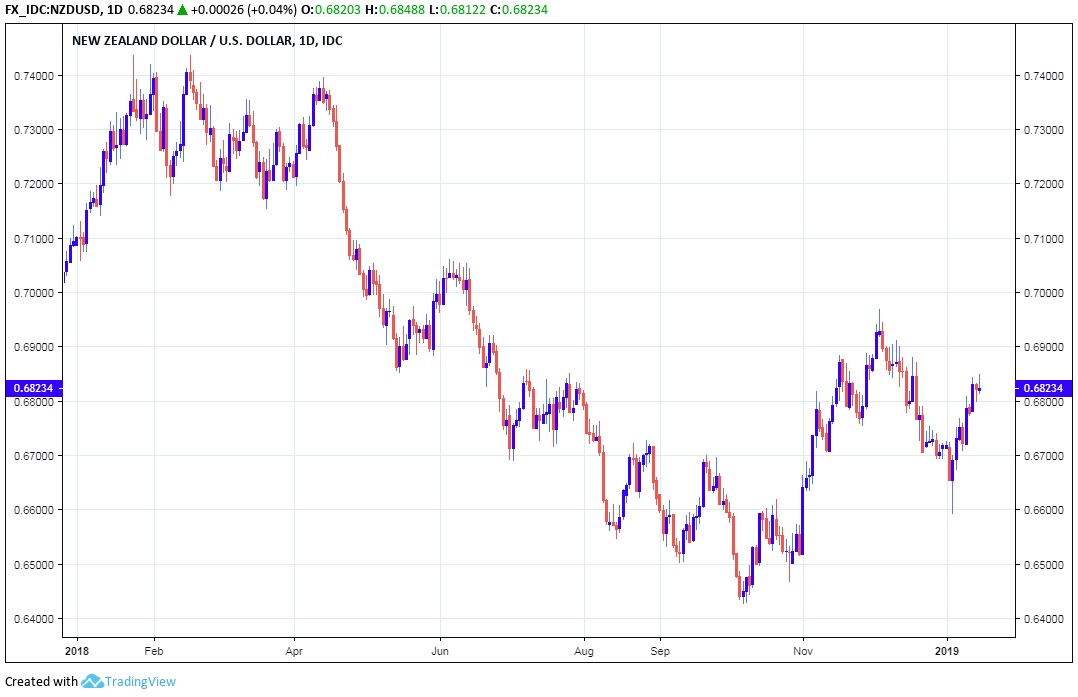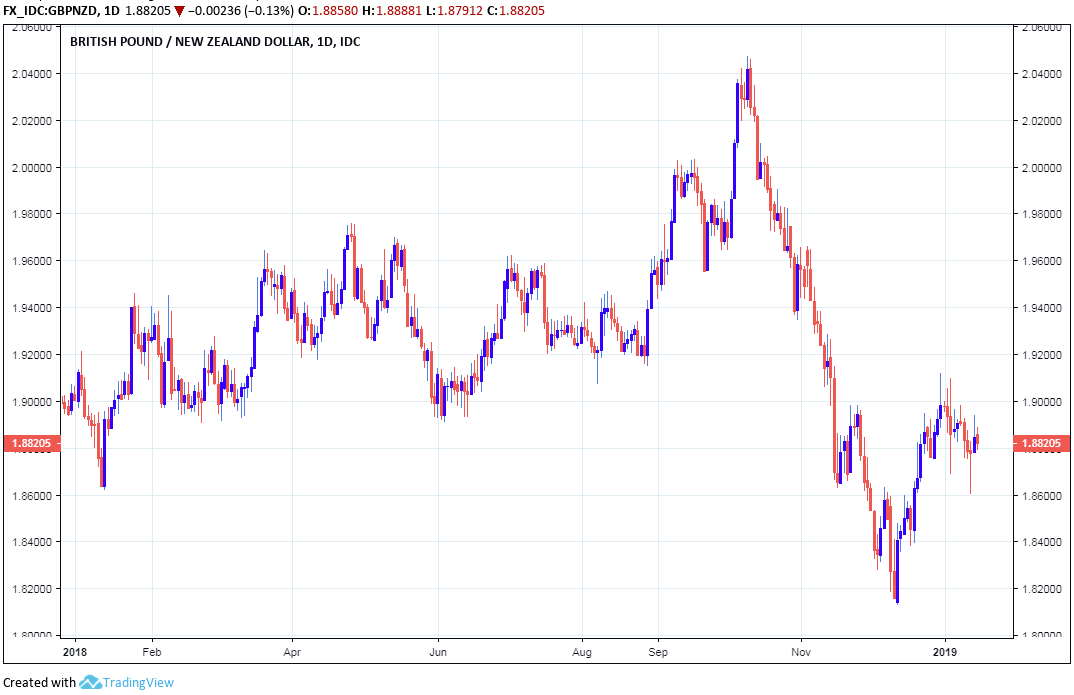New Zealand Dollar's Business Confidence Boost Fades, Analysts Forecast Fresh Depreciation
- Written by: James Skinner
-

© Comugnero Silvana, Adobe Stock
- NZD strength fades following China-related boost in overnight session.
- Business confidence rebounds in Q4, signals early 2019 growth pickup.
- But J.P. Morgan forecasts renewed depreciation for NZDUSD this year.
The New Zealand Dollar softened during noon trading Tuesday after giving up earlier gains made overnight when Chinese officials said far-reaching tax cuts are on the way and a survey showed Kiwi business confidence recovering from a post-crisis low at the end of last year.
New Zealand's Dollar had entered the London session on its front foot after officials from China's central bank and finance ministry told reporters in Beijing the government will soon implement a sweeping wave of tax cuts designed to support small businesses and the manufacturing sector.
The South China Morning Post reported that those tax cuts will be on a "larger scale" than was previously suggested would be the case,. The comments appeared to fuel support for so-called risk assets like the Kiwi currency and stock markets Tuesday.
"The more the Chinese authorities use fiscal policy to help manage the economic slowdown, the longerthey can avoid triggering CNY weakness, which would support the dollar more broadly. China's slowing economy does, however, reinforce the risk that the global economic cycle has turned lower more sharply than some realise," says Kit Juckes, chief FX strategist at Societe Generale.
Chinese economic data matters to the Kiwi Dollar because the Antipodean currency is underwritten by a significant commodity trade with the world's second largest economy. This means it is sensitive to news impacting China's economy and currency as well as the outlook for global growth.
China's talk of tax cuts came around the same time the New Zealand Institute of Economic Research (NZIER) said business confidence rebounded from a post-financial crisis low during the final quarter of last year.
The NZIER business confidence index rose from -30 to -17 during the fourth-quarter of 2018, aided by a pick-up in domestic demand that was reported in the institute's Quarterly Survey of Business Opinion.
Confidence is still close to a decade low, with a net 18% of companies saying they expect general economic conditions to worsen over the coming months.
However, the NZIER says firms' comments on their own activity, rather than general activity, are a better indicator of GDP growth. And a net 4% of companies said in response to the latest survey that they expect their own trading activity to pick up this quarter.
"Businesses share our ASB colleague’s view that economic growth will pick up from early 2019. However, business profitability continues to deteriorate because of cost pressures. If profitability continues to weaken, there will be a risk growth and inflation will be weaker than we are currently expect," says Joseph Capurso, a strategist at Commonwealth Bank of Australia.

Above: NZD/USD rate shown at daily intervals.
The NZD/USD rate was quoted -0.12% lower at 0.6818 during the noon session Tuesday but has risen 1.59% this year, while the Pound-to-New-Zealand-Dollar rate was -0.20% lower at 1.8820 and has fallen -0.66% in 2019.
"Short NZD/USD: Our [financial] model is looking for a small move downwards from 0.6820 to 0.6767 over the next two weeks. The 1M z-score of 2.3 exceeds the optimal threshold of 1.5, indicating that the pair is overvalued," says Bipan Rai, a macro strategist at CIBC Capital Markets.
The Kiwi had enjoyed a boost overnight and into the London session but has since given up gains, as the U.S. Dollar turned higher and European stock markets turned lower.

Above: Pound-to-New-Zealand-Dollar rate shown at daily intervals.
"We expect NZD to depreciate to 0.61 by year-end," says Sally Auld, chief NZ economist at J.P. Morgan. "New Zealand’s agricultural exports are subject to both a negative demand shock (China), and a loss of market share (negative domestic supply shock with rising global supply)."
Exports of milk and other agricultural goods are what underwrites the Kiwi currency so declines in prices have an adverse impact on the fundamentals of the economy and New Zealand Dollar.
Supply of milk powder on global markets has been rising during recent months, leading New Zealand's dairy co-operative Fonterra to cut its forecasts for payouts to farmers for the final quarter.
Actual prices achieved at auction have trended higher since early November, and were up 3% following a sale that took place on Tuesday, although auction prices are still more than 10% lower than their February 2018 level.
This, and the so-called trade war that has hurt the Chinese economy during the last six months or so, has been a significant weight around the ankles of the New Zealand Dollar.
Auld says this, and the downbeat outlook for interest rate policy at the Reserve Bank of New Zealand (RBNZ), means the Kiwi Dollar is likely to see new lows during the 2019 year.
The RBNZ has held its interest rate at a record low of 1.75% ever since late 2016, citing below-target inflation and a growth outlook that is insufficient to facilitate a meaningful pick-up in price pressures over the short term.
Changes in interest rates are normally only made in response to movements in inflation but impact currencies because of the push and pull influence they have on capital flows and their allure for speculators.
Bank-beating exchange rates. Get up to 5% more foreign exchange by using a specialist provider to get closer to the real market rate and avoid the gaping spreads charged by your bank when providing currency. Learn more here




